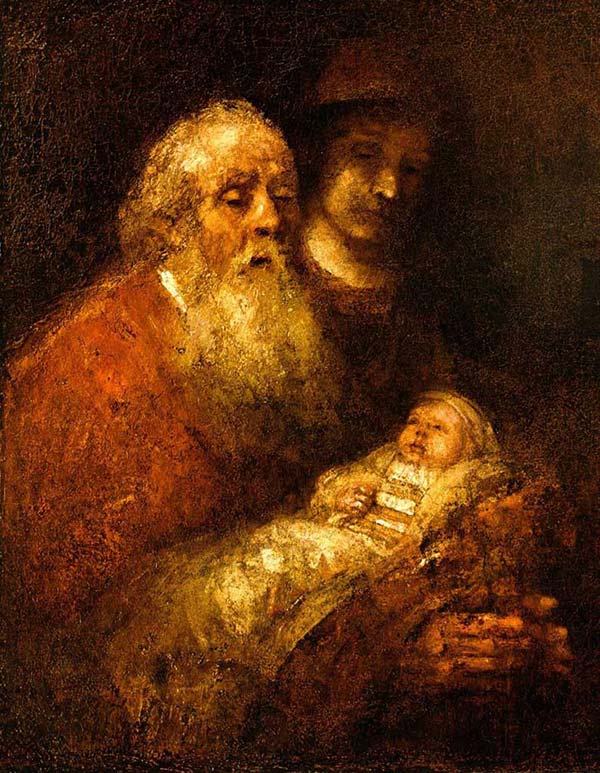Subtotal: $
Checkout
The whole life of Christ was a continual Passion; others die martyrs but Christ was born a martyr. He found a Golgotha, where he was crucified, even in Bethlehem, where he was born; for to his tenderness then the straws were almost as sharp as the thorns after, and the manger as uneasy at first as the cross at last. His birth and his death were but one continual act, and his Christmas day and his Good Friday are but the evening and morning of the same day. And as even his birth is his death, so every action and passage that manifests Christ to us is his birth, for Epiphany is manifestation. Every manifestation of Christ to the world, to the Church, to a particular soul is an Epiphany, a Christmas day.

Rembrandt, Simeon in the Temple (1669)
Now there is nowhere a more evident manifestation of Christ than in that which induced this text, “Lord now lettest thy servant depart in peace …” It had been revealed to Simeon, whose words these are, that he should see Christ before he died. And actually, and really, substantially, essentially, bodily, presentially, personally he does see him. So it is Simeon’s Epiphany, Simeon’s Christmas day. So also this day, in which we commemorate and celebrate the general Epiphany, the manifestation of Christ to the whole world in his birth, all we, we who besides our interest in the universal Epiphany and manifestation implied in the very day, have this day received the Body and Blood of Christ in his holy and blessed Sacrament, have had another Epiphany, another Christmas day, another manifestation and application of Christ to ourselves. The Church prepares our devotion before Christmas day with four Sundays in Advent, which bring Christ nearer and nearer to us and remind us that he is coming to enable us by a further examination of ourselves to depart in peace, because our eyes have seen his salvation …
Lord, now lettest thou thy servant depart in peace, according to thy word: for my eyes have seen thy salvation. —Luke 2:29–30
To be able to conclude that you have had a Christmas day, a manifestation of Christ in your souls, you shall have a whole Good Friday, a crucifying and an “it is finished,” a measure of corrections, and joy in those corrections. You shall have temptations, and a Resurrection and an Ascension, an inchoation and an unremovable possession of heaven itself in this world. Make good your Christmas day, that Christ be born in you, and he who died for you will live with you all the year, and all the years of your lives, and inspire into you, and receive from you at the last gasp, this blessed acclamation, “Lord now lettest thou thy servant depart in peace …”
Simeon waited, says the story, and he waited for the consolation of Israel. And all that God had said should be done was done, for as it is said, “It was revealed unto him, by the Holy Ghost, that he should not see death before he had seen the Lord’s Christ,” and now he had seen that salvation. Abraham saw this before, but with the eye of faith, and yet rejoiced to see it so, he was glad even of that. Simeon saw it, too … but he saw it with the eye of hope. Of such hope Abraham had no such ground; no particular hope, no promise that he should see the Messiah in his time. Simeon had, and yet he waited, he attended God’s leisure. But hope deferred maketh the heart sick (says Solomon). But when that which is desired comes, it is a tree of life. His desire was come; he saw his salvation.
From Watch for the Light: Readings for Advent and Christmas.
Already a subscriber? Sign in
Try 3 months of unlimited access. Start your FREE TRIAL today. Cancel anytime.







George Marsh
Donne's gift of seeing paradoxes that carry sacred truths is a blessing for every reader of his. Thank you for reprinting this.
greg gelburd
The painting says it all brush strokes not words thank you